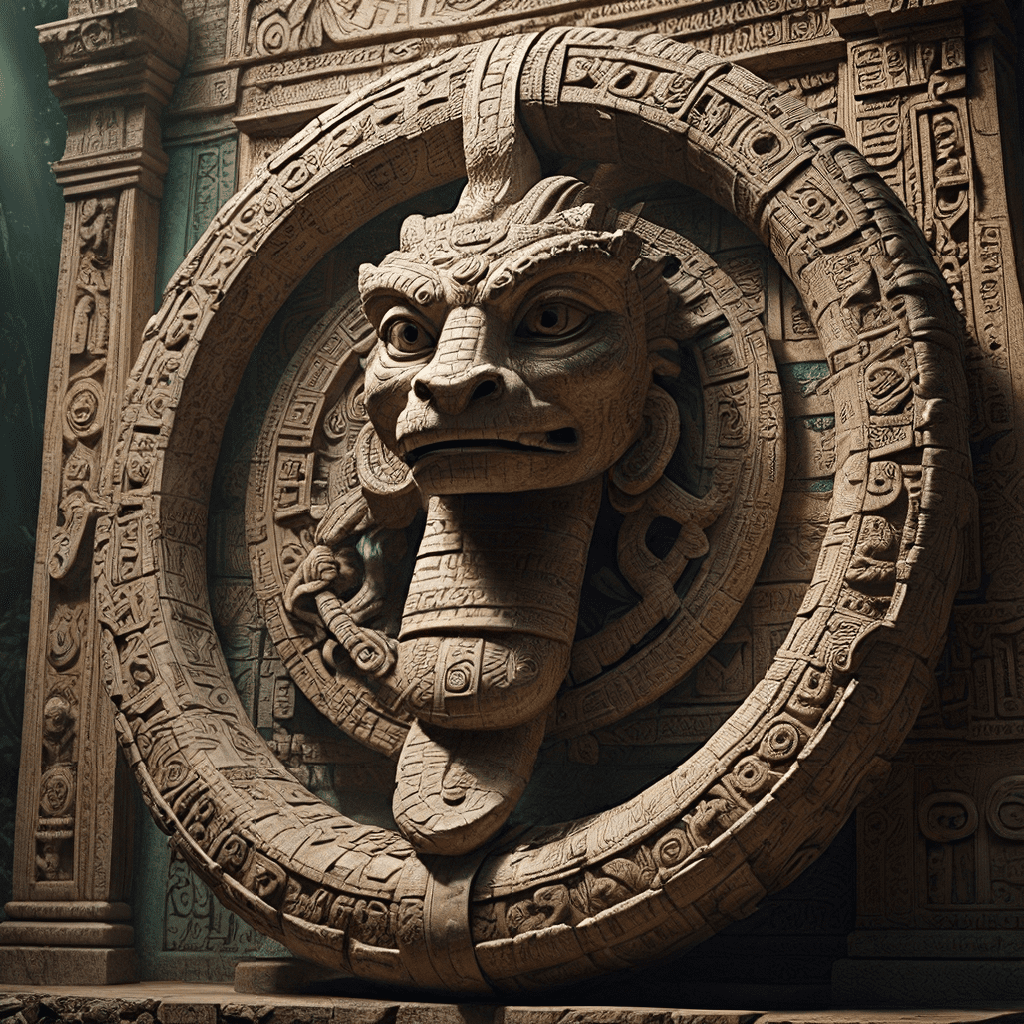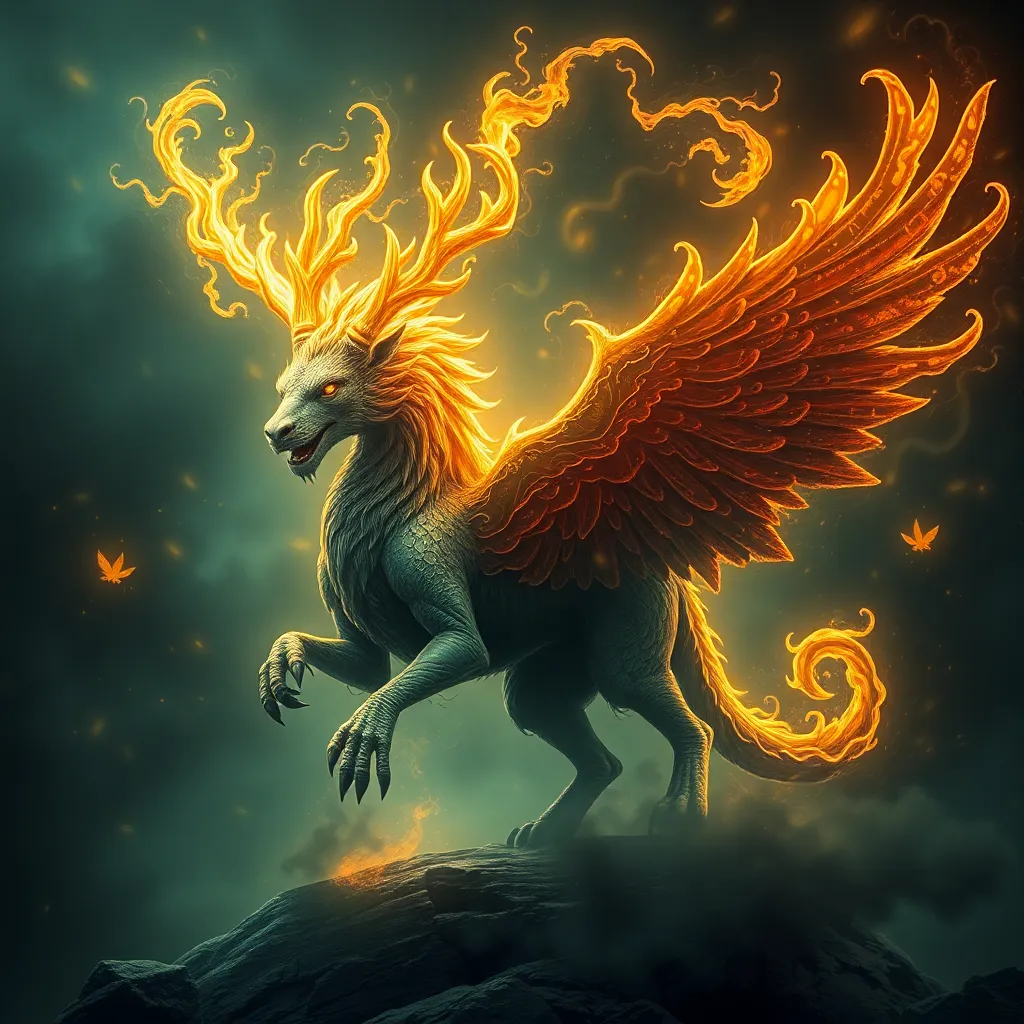The Dragon’s Fate: Fafnir’s Death and its Symbolic Significance
I. Introduction
Fafnir is one of the most intriguing figures in Norse mythology, often depicted as a dragon whose fate is intertwined with themes of greed, transformation, and heroism. Originally a dwarf, Fafnir’s transformation into a dragon serves as a poignant narrative about the corrupting power of wealth and the inevitable consequences of greed. His death at the hands of the hero Sigurd is a pivotal moment in Norse legends, symbolizing not only the triumph of good over evil but also the profound moral lessons that resonate through time.
II. Fafnir’s Origin and Transformation
Fafnir was born the son of Hreidmar, a dwarf who came into possession of a vast treasure, including the cursed gold of Andvari. This treasure, however, was tainted by a curse that foretold doom to those who possessed it. Driven by greed and paranoia, Fafnir killed his father to claim the treasure for himself. As he hoarded the gold, the curse transformed him, physically and spiritually, into a monstrous dragon, representing the ultimate manifestation of his greed.
A. Background of Fafnir as a Dwarf and Son of Hreidmar
In the Norse mythological canon, Fafnir is depicted as a dwarf, a race known for their craftsmanship and affinity for treasure. As the son of Hreidmar, he was initially part of a family that possessed great wealth. However, the insatiable desire for gold led to familial strife and tragedy. Hreidmar’s death at Fafnir’s hands marked the beginning of Fafnir’s transformation, both literally into a dragon and metaphorically into a symbol of greed.
B. The Curse of the Gold and Its Impact on Fafnir
The gold that Fafnir coveted was cursed by the original owner, Andvari, who had lost it under dire circumstances. The curse brought about endless sorrow and strife, ultimately leading to Fafnir’s isolation and transformation into a dragon. This curse highlights the destructive nature of greed, as Fafnir became a creature that hoarded wealth but lost his humanity in the process.
C. The Metamorphosis from Dwarf to Dragon
Fafnir’s metamorphosis into a dragon symbolizes the complete surrender to greed. Once a being of intelligence and craft, he became a fearsome creature, embodying the very essence of avarice. This transformation serves as a cautionary tale about the dangers of allowing material desires to consume one’s soul, illustrating how greed can lead to one’s downfall.
III. The Heroic Context: Sigurd’s Quest
Sigurd, also known as Siegfried in Germanic tales, emerges as the heroic figure destined to confront Fafnir. His journey to slay the dragon is steeped in mythological significance, representing the archetypal hero’s quest that is prevalent in various cultures.
A. Introduction to Sigurd (Siegfried) as the Heroic Figure
Sigurd is celebrated as one of the greatest heroes in Norse mythology, known for his bravery, strength, and noble spirit. His lineage is intertwined with the legacy of dragon slayers, and his quest to defeat Fafnir is a crucial chapter in his heroic narrative.
B. The Significance of the Dragon-Slaying Motif in Hero Myths
The dragon-slaying motif is a common theme in hero myths across cultures. It often represents the struggle against chaos and evil, with dragons symbolizing the ultimate challenge that a hero must face to achieve greatness. Sigurd’s confrontation with Fafnir is not merely a physical battle but a representation of his growth and maturity as a hero.
C. The Prophecy and Guidance from the Valkyrie, Brynhildr
Sigurd’s quest is further complicated and enriched by prophecies and divine guidance, particularly from Brynhildr, a Valkyrie. Her foretelling of events sets the stage for Sigurd’s destiny, emphasizing the interconnectedness of fate and free will in Norse mythology.
IV. The Act of Slaying: Symbolism of the Battle
The climactic confrontation between Sigurd and Fafnir is laden with symbolism and significance, marking a pivotal moment in the narrative of heroism.
A. Description of the Confrontation between Sigurd and Fafnir
The battle occurs in a desolate place where Fafnir, now a massive dragon, lies coiled around his hoard of gold. Sigurd, armed with his sword Gram, approaches with courage, prepared to face the embodiment of avarice.
B. Analysis of Weaponry: Gram and Its Symbolic Implications
Gram, Sigurd’s sword, symbolizes not only his martial prowess but also the righteousness of his quest. Forged by the legendary smith Regin, it represents the hero’s connection to fate and destiny, essential components in his battle against the forces of greed and darkness.
C. The Act of Slaying as a Rite of Passage for Sigurd
Slaying Fafnir serves as a rite of passage for Sigurd, marking his transition from a young warrior to a legendary hero. This act is not just a physical victory but a spiritual one, as he confronts and overcomes the very essence of greed.
V. Fafnir’s Death: Themes of Greed and Transformation
The death of Fafnir encapsulates several profound themes that resonate through the narrative.
A. The Relationship between Greed and Fafnir’s Downfall
Fafnir’s demise is a direct consequence of his insatiable greed. His obsession with gold led to isolation, transformation, and ultimately, death. This theme serves as a warning about the dangers of allowing material desires to override one’s humanity.
B. The Symbolic Representation of Death and Rebirth through Fafnir’s Demise
Fafnir’s death symbolizes not only the end of his reign of terror but also the possibility of rebirth. In Norse myth, death is often intertwined with transformation, suggesting that the end of one entity can lead to new beginnings for others.
C. Transformative Effects on Sigurd and the Surrounding World
With Fafnir’s death, Sigurd gains not only the treasure but also wisdom and strength. This transformation extends to the world around him, as the curse of the gold is lifted, and peace is restored. Sigurd’s actions have far-reaching implications, reinforcing the interconnectedness of fate and the consequences of one’s choices.
VI. Cultural and Literary Legacy of Fafnir’s Death
The story of Fafnir has left an indelible mark on literature and culture, influencing countless adaptations and interpretations.
A. Influence on Later Literature and Adaptations (e.g., Wagner’s Ring Cycle)
Fafnir’s tale has permeated various literary works, most notably Richard Wagner’s “Ring Cycle,” where themes of greed and betrayal are explored through the character of Fafnir. This adaptation showcases the enduring relevance of the myth in understanding human nature and morality.
B. Fafnir as a Symbol in Modern Fantasy and Pop Culture
In contemporary fantasy and popular culture, Fafnir continues to serve as a symbol of the dragon archetype. His story is echoed in various media, including films, video games, and novels, reinforcing the timeless appeal of dragon myths as embodiments of greed, power, and the hero’s journey.
C. The Enduring Themes of Heroism and Moral Lessons
Fafnir’s narrative imparts valuable moral lessons about the perils of greed and the importance of courage and integrity. These themes resonate across different cultures and eras, reminding us of the universal struggles faced by heroes and the consequences of their choices.
VII. Symbolic Significance of Dragons in Mythology
Dragons occupy a unique position in mythology, serving as both guardians and adversaries.
A. The Role of Dragons as Guardians of Treasure and Knowledge
In many myths, dragons are depicted as guardians of vast treasures, symbolizing knowledge and power. They often challenge heroes to prove their worthiness, thus serving as catalysts for personal growth.
B. Comparison to Other Mythological Dragons and Their Symbolism
Dragons across various mythologies share common traits, often embodying chaos, destruction, and greed. However, they can also represent wisdom and transformation, as seen in Eastern traditions where dragons are revered as benevolent forces.
<h




